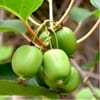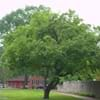Life Span
Perennial
Biennial and Perennial
Type
Flowering Plants, Fruits, Herbs, Shrubs
Flowering Plants
Origin
Australia, South America
Europe, Northern Europe, Western Europe
Types
Adams Elderberry, Black Beauty Elderberry, Black Lace Elderberry, Johns Elderberry, Nova Elderberry
'Bellagio Apricot' begonia, 'Bellagio Blush' begonia, 'Bellagio Pink' begonia
Habitat
Farms, Homesteads, Near organic waste disposal
Subtropical climates, Tropical regions
USDA Hardiness Zone
4-8
3-9
Sunset Zone
2a, 2b, 3a, 3b, 4, 5, 6, 7, 14, 15, 16, 17
21,22
Habit
Upright/Erect
Cushion/Mound-forming
Flower Color
White
White, Yellow, Red, Pink, Light Pink, Rose, Dark Red, Orange Red
Flower Color Modifier
Not Available
Bicolor
Fruit Color
Purple, Red
Not Available
Leaf Color in Spring
Green
Light Green, Blue Green, Gray Green
Leaf Color in Summer
Green
Light Green, Blue Green, Gray Green
Leaf Color in Fall
Yellow green
Light Green, Blue Green, Gray Green
Leaf Color in Winter
Not Available
Light Green
Leaf Shape
Compound
Long Linear
Plant Season
Early Spring
Spring, Summer, Fall
Sunlight
Full Sun, Part sun
Full Sun, Partial Sun
Growth Rate
Medium
Medium
Type of Soil
Loamy, Sandy, Well drained
Loam
The pH of Soil
Slightly Acidic
Neutral
Soil Drainage
Average
Well drained
Bloom Time
Early Spring, Spring
Early Spring, Spring, Late Spring
Tolerances
Pollution
Drought, Shade areas
Where to Plant?
Ground
Container, Ground, Pot
How to Plant?
Grafting, Seedlings
Divison, Seedlings, Stem Planting
Plant Maintenance
Medium
Low
Watering Requirements
Requires regular watering, Use Mulches to help prevent water loss during hot and windy weather
Needs watering once a week
In Summer
Lots of watering
Moderate
In Spring
Moderate
Moderate
In Winter
Average Water
Average Water
Soil pH
Slightly Acidic
Neutral
Soil Type
Loamy, Sandy, Well drained
Loam
Soil Drainage Capacity
Average
Well drained
Sun Exposure
Full Sun, Part sun
Full Sun, Partial Sun
Pruning
Cut or pinch the stems, No pruning needed in the early stages, Prune for shortening long shoots, Prune if you want to improve plant shape, Prune in winter, Prune ocassionally, Remove deadheads
Cut or pinch the stems, Remove damaged leaves, Remove dead branches, Remove dead leaves
Fertilizers
All-Purpose Liquid Fertilizer
All-Purpose Liquid Fertilizer, fertilize in growing season, fertilize in spring, fertilize in summer
Pests and Diseases
Canker, Leaf spot, Powdery mildew, Stem spot, Tomato Ringspot Virus
Fusarium wilt, Gray mold, Leaf spot, Root rot, Rust, Slugs
Plant Tolerance
Drought
Drought, Shade areas
Flower Petal Number
Single
Single, Double, Semi-Double
Foliage Texture
Medium
Fine
Foliage Sheen
Matte
Matte
Attracts
Birds
Not Available
Allergy
Diarrhea, Nausea, Vomiting
Asthma
Aesthetic Uses
Not Used For Aesthetic Purpose
Beautification, Bouquets, Cottage Garden
Beauty Benefits
Not Available
Not Available
Environmental Uses
Air purification
Air purification
Medicinal Uses
constipation, Fever, Heart problems, High cholestrol, HIV/AIDS, Nerve pain, swine flu
Bronchitis, Candidiasis, Cold, Digestive disorders, Dysentry, Haemoptysis, Liver problems, Menstrual Disorders, Scrofula, Swelling
Part of Plant Used
Flowers, Fruits
Whole plant
Other Uses
Not Available
Food for animals
Used As Indoor Plant
No
Yes
Used As Outdoor Plant
Yes
Yes
Garden Design
Not Available
Bedding Plant, Container, Cutflower, Feature Plant, Groundcover, Hanging Basket, Mixed Border, Rock Garden / Wall
Botanical Name
Sambucus nigra
DIANTHUS barbatus 'Heart Attack'
Common Name
Elderberry
Heart Attack Sweet William, Sweet William
In Hindi
Elderberry
स्वीट विलियम
In German
Holunderbeere
Bartn
In French
Sureau
sweet william
In Spanish
Saúco
Guillermo dulce
In Greek
Elderberry
είδος γαρύφαλλου
In Portuguese
Sabugueiro
william doce
In Polish
Bez czarny
słodki William
In Latin
Elderberry
amaranthus
Phylum
Magnoliophyta
Magnoliophyta
Class
Magnoliopsida
Magnoliopsida
Order
Dipsacales
Caryophyllales
Family
Adoxaceae
Caryophyllaceae
Clade
Angiosperms, Asterids, Eudicots
Angiosperms, Core eudicots, Eudicots
Tribe
Not Available
Not Available
Subfamily
Not Available
Not Available
Number of Species
Not Available
Importance of Elderberry and Sweet William
Want to have the most appropriate plant for your garden? You might want to know the importance of Elderberry and Sweet William. Basically, these two plants vary in many aspects. Compare Elderberry and Sweet William as they differ in many characteristics such as their life, care, benefits, facts, etc. Every gardener must at least have the slightest clue about the plants he wants to plant in his garden. Compare their benefits, which differ in many ways like facts and uses. The medicinal use of Elderberry is constipation, Fever, Heart problems, High cholestrol, HIV/AIDS, Nerve pain and swine flu whereas of Sweet William is Bronchitis, Candidiasis, Cold, Digestive disorders, Dysentry, Haemoptysis, Liver problems, Menstrual Disorders, Scrofula and Swelling. Elderberry has beauty benefits as follows: Not Available while Sweet William has beauty benefits as follows: Not Available.
Compare Facts of Elderberry vs Sweet William
How to choose the best garden plant for your garden depending upon its facts? Here garden plant comparison will help you to solve this query. Compare the facts of Elderberry vs Sweet William and know which one to choose. As garden plants have benefits and other uses, allergy is also a major drawback of plants for some people. Allergic reactions of Elderberry are Diarrhea, Nausea and Vomiting whereas of Sweet William have Asthma respectively. Having a fruit bearing plant in your garden can be a plus point of your garden. Elderberry has no showy fruits and Sweet William has no showy fruits. Also Elderberry is flowering and Sweet William is not flowering . You can compare Elderberry and Sweet William facts and facts of other plants too.





